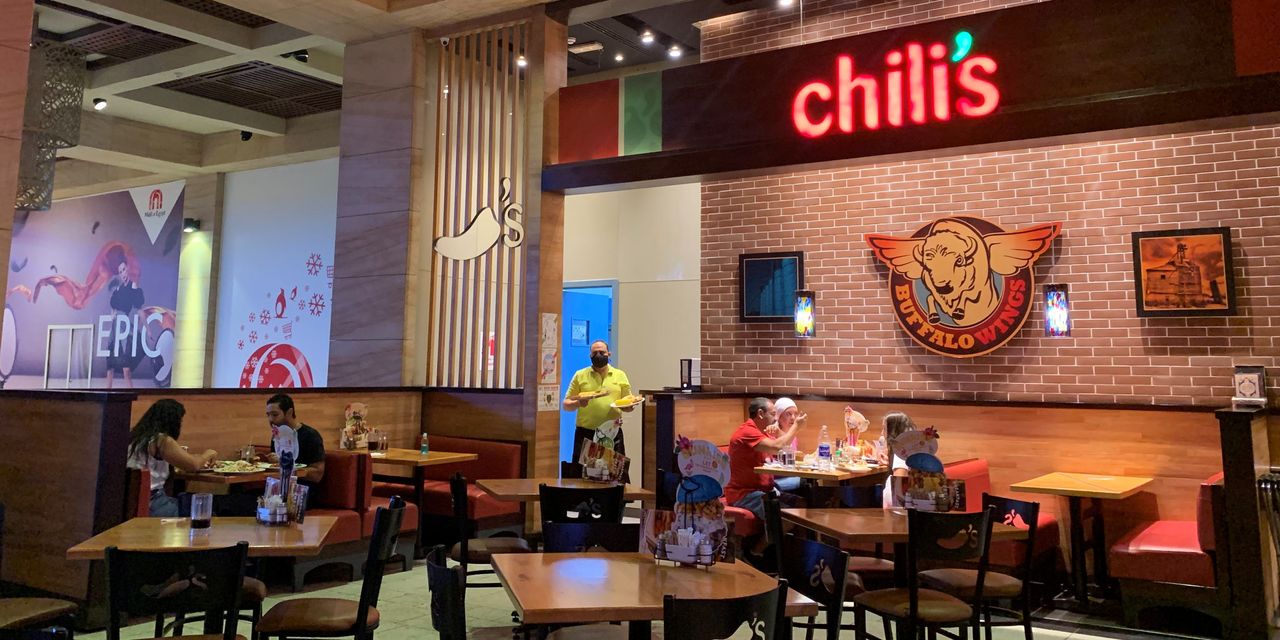Inflation is making casual-dining shareholders sick to their stomachs. Relief is likely on the way.
Brinker International,
EAT -0.18%
owner of Chili’s, said last Tuesday that it earned 34 cents a share on an adjusted basis in its fiscal first quarter, which ended in September—far below Wall Street analysts’ estimate of 68 cents a share.
Eateries need to mind their pennies even when customers are flocking to restaurants because small changes in costs can take a big bite out of profits. For Brinker, labor expense as a share of total revenue was up 1.5 percentage points from a year earlier while the share of food costs rose 0.6 percentage point.
That damaged the bottom line despite continued strong customer demand: Total revenue grew by 11% from the same quarter two years earlier, before the pandemic began. That growth could have been even stronger if it weren’t for the spread of the Delta variant during the summer.
The tight labor market and supply chain woes are having an industrywide effect:
BJ’s Restaurants
said last week that more than one-fifth of its locations used a limited menu during the third quarter. Other restaurants will likely report similar cost pressures as the current earnings season unfolds. And although Covid-19 case counts are trending lower nationally, investors can’t rule out the possibility of yet another resurgence this fall.
That has ruined Wall Street’s appetite for restaurant stocks: Brinker shares are down by about one-third over the past six months while
Cheesecake Factory
stock has shed about 28% over that period and BJ’s shares have lost about 36%.
But some encouraging trends deserve more attention. For starters, there is good reason to believe that elevated labor expenses will at least partially abate. Brinker said at an investor day presentation last week that a large portion of the recent spike in labor costs is due to short-term challenges. For instance, overtime gets paid at a higher rate in a worker shortage, while training expenses surge after a hiring spree to improve staffing. Newer workers also tend to be less productive than those with more experience.
Brinker is raising prices by 3% to 3.5% this year to address higher costs. Pricing power is limited in the restaurant industry, but there is reason to believe that strong customer demand will absorb higher costs in the months ahead. If higher prices can pay for more employees in a tight labor market, then that alone could pay off. At BJ’s, comparable sales rose in the most recent quarter by 5% from a year earlier at locations with normal staffing levels and fell by about that much at understaffed locations.
Americans with the negotiating power to secure more pay and overtime should be more understanding when their waiter drops off that big check.
Copyright ©2021 Dow Jones & Company, Inc. All Rights Reserved. 87990cbe856818d5eddac44c7b1cdeb8













































